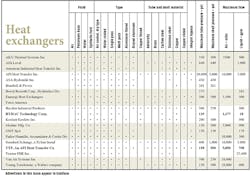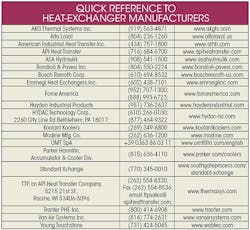Heat Exchanger Manufacturers to Meet Hydraulic System Needs
Contamination can cause major issues for hydraulic systems but so too can excessive heat — which could create even bigger problems for hydraulic oil. Therefore, it is necessary to keep these systems running cool.
Heat exchangers are key to doing so in both mobile and industrial applications. They keep hydraulic systems running cool by transfering any heat generated by the system to the surrounding air.
There are numerous manufacturers which develop a range of heat exchangers to serve any hydraulic application. To provide an overview of the full spectrum of standard products, above is a chart summarizing major manufacturers and general specifications on their products.
Below is a table containing contact information for each company. To see examples of some of their technologies, view our media gallery "Beat the Heat with an Oil Cooler."



